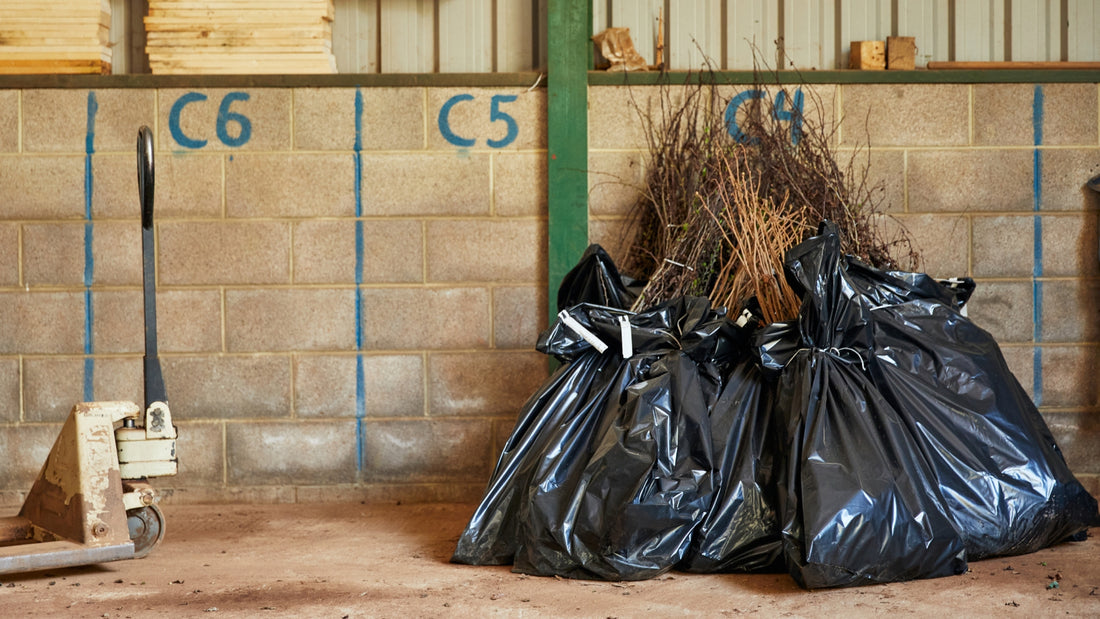
When to Plant Bare Root Hedging
Share
Bare root hedging is a fantastic way to create natural boundaries and add aesthetic value to your outdoor space. If you're looking to boost your garden's appeal with a beautifully lush hedge, you're in the right place. In this guide, we'll explore the when, why, and how of planting bare root hedging, helping you achieve a thriving, picture-perfect hedge that's the envy of your neighbourhood.
What Is Bare Root Hedging? Bare root hedging is a method of planting young hedge plants when they are dormant, typically without soil around their roots. This approach offers several advantages, including cost-effectiveness and easier handling. It's important to understand what bare root hedging entails before diving into the specifics.
Why Plant Bare Root Hedging? Bare root hedging offers numerous benefits, such as cost savings, better establishment, and a wider range of species to choose from. We'll delve deeper into these advantages to help you make an informed decision.
Ideal Times for Planting Bare Root Hedging
The best time to plant bare root hedging varies depending on the specific species, local climate, and soil conditions. Generally, the optimal time falls within the dormant season, when the plants are not actively growing. This period ensures the plants can establish their root systems before the growing season begins.
Here are the ideal times for planting bare root hedging:
- Late Autumn: Planting bare root hedging in late autumn, after deciduous trees have dropped their leaves, is a popular choice. This time allows for root establishment before winter and growth when spring arrives.
- Winter: Planting during the winter months, when the hedge plants are completely dormant, is another suitable option. This period typically spans from December to February.
- Early Spring: If you've missed the late autumn and winter planting window, early spring (March to April) is the next best time. Planting early in spring gives the hedge time to establish roots before the summer heat sets in.
Understanding Root Dormancy
Root dormancy is a natural state in which plant roots experience a period of reduced activity. This phenomenon is a survival strategy employed by many plants, particularly in temperate climates, to conserve energy and resources during harsh weather conditions.
The main factors contributing to root dormancy are temperature and day length. As temperatures drop and daylight hours shorten, the plant's metabolism slows down, including root growth. This dormancy state allows the plant to redirect its energy towards essential functions, such as water and nutrient storage, while minimizing stress and resource depletion.
The Connection Between Leaf Loss and Dormancy
In temperate regions, deciduous trees and shrubs shed their leaves during the autumn months as a response to environmental cues. This leaf drop is not coincidental but is closely linked to root dormancy.
- Reduced Photosynthesis: Leaves are the primary sites for photosynthesis, the process through which plants produce energy from sunlight. When daylight hours decrease, the plant becomes less efficient at photosynthesis. As a result, it withdraws nutrients and energy from its leaves and sends them to the roots.
- Resource Conservation: Shedding leaves is a strategy to conserve resources during unfavourable conditions. The plant redirects resources from leaves, which are about to fall off anyway, to the roots, ensuring the vital parts of the plant are adequately nourished.
- Reduced Transpiration: Transpiration, the loss of water vapor through leaves, can be significant during the growing season. When leaves drop, transpiration is minimized, leading to reduced water loss and water stress for the plant.
- Protection from Frost and Wind: Leafless plants are less susceptible to winter damage caused by frost and wind. Without leaves, they have less surface area exposed to harsh elements.
Advantages of Planting Bare Root Hedging in Late Autumn and Winter
- Enhanced Root Development: As root dormancy sets in during winter, the plant invests more energy in developing its root system. This is especially beneficial for newly planted trees and shrubs. When you plant during winter, you're essentially giving your plants a head start in establishing a robust root network.
- Reduced Stress on Foliage: Planting during the winter minimizes the stress on the plant's above-ground foliage. Since the plant is already leafless or has fewer leaves, it can direct its energy towards root growth without the added burden of supporting a full canopy.
- Reduced Risk of Transplant Shock: Transplanting a plant can be a stressful experience, and the shock can often result in wilted or damaged foliage. Planting during the winter, when the plant is dormant, reduces the risk of transplant shock, allowing the plant to focus on root establishment.
- Optimal Soil Conditions: Winter often brings ample rainfall, ensuring the soil is adequately moist for new plantings. Additionally, the reduced evaporation rates mean that water remains available in the root zone for an extended period.
- Weed and Pest Control: Weeds and pests are less active during winter, reducing the competition and potential threats to your newly planted specimens.
Steps for Planting Bare Root Hedging
To ensure the success of your bare root hedging, follow these steps:
- Site Preparation: Choose a suitable location for your hedge, taking into account factors like soil type, drainage, and sunlight. Prepare the site by removing any weeds and ensuring the soil is well-drained.
- Soak Roots: Before planting, soak the bare root hedge plants in a bucket of water for several hours. This helps rehydrate the roots and promotes better establishment.
- Digging Trenches: Dig a trench to the desired depth and length for your hedge. The depth will depend on the size and type of plants you are using. Typically, the trench should be deep enough to accommodate the roots without bending or crowding them.
- Planting Spacing: Space your hedge plants according to their specific requirements. This is usually between 30cm to 60cm, but it can vary depending on the species.
- Positioning: Place the hedge plants in the trench, spreading their roots evenly. Ensure they are at the correct depth, with the soil mark on the stem at ground level.
- Firm Soil: Backfill the trench with the excavated soil and firm it down to eliminate air pockets. Water the trench thoroughly to settle the soil around the roots.
- Mulch: Apply a layer of mulch around the base of the hedge to help retain moisture and suppress weed growth.
- Pruning: While you can prune bare root hedging at planting time to encourage bushier growth, it is often best to wait until the following year to allow the hedge to establish its root system.
- Watering and Maintenance: Ensure the hedge is adequately watered during the first growing season, especially in dry periods. Regularly check for weeds and pests, and address any issues promptly.
- Support: Depending on the height and species of your hedge, it may require support in the form of stakes and ties to keep it upright and stable until it establishes itself.
Common Bare Root Hedging Species
The choice of bare root hedging species is extensive, and it largely depends on your specific needs and preferences. Here are some common species used for bare root hedging:
- Beech (Fagus sylvatica): Beech is a popular choice for formal hedges due to its dense, lush foliage. It retains its coppery leaves throughout the winter.
- Hawthorn (Crataegus monogyna): Hawthorn is a native hedge plant known for its dense thorny structure. It provides valuable habitat for wildlife.
- Privet (Ligustrum): Privet is an evergreen hedging option that is hardy and easy to maintain.
- Laurel (Prunus laurocerasus): Cherry laurel is a versatile evergreen option known for its glossy, dark-green leaves.
- Yew (Taxus baccata): Yew is an excellent choice for formal, clipped hedges. It has dark green, needle-like foliage and is slow-growing.
- Hornbeam (Carpinus betulus): Hornbeam is a deciduous option with attractive serrated leaves that turn yellow in autumn.
- Box (Buxus sempervirens): Box is a popular choice for low hedges and topiary. It is known for its small, glossy, evergreen leaves.
In conclusion
Planting in winter, despite being less common than spring or fall planting, offers several significant advantages due to the natural phenomenon of root dormancy and leaf loss in many deciduous plants. Root dormancy, triggered by decreasing temperatures and shorter daylight hours, allows plants to conserve energy and resources during harsh winter conditions. Leaf loss is closely linked to this dormancy, as it reduces photosynthesis, redirects resources to the roots, conserves water, and protects plants from frost and wind.
Planting during winter is advantageous because it promotes enhanced root development, reduces stress on foliage, lowers the risk of transplant shock, optimizes soil conditions, and provides a window for weed and pest control.



